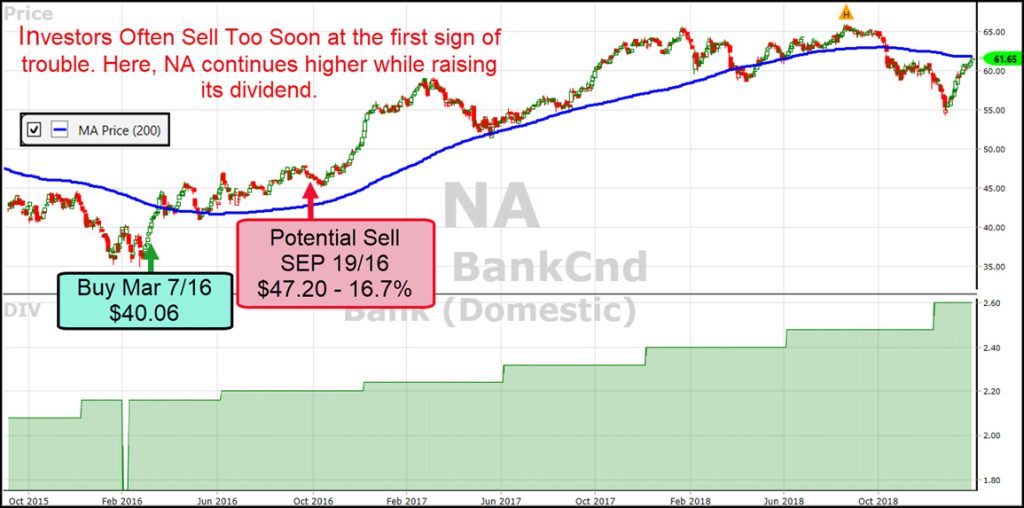I usually get a few emails after each weekly essay, mostly positive, always constructive, and always nice to receive either way. Last week’s essay drew the largest response so far. Titled, Your High Income Portfolio, it seemed to strike the right chord for many investors who want to do less trading and simply generate meaningful income for their retirement, income that will grow year over year as companies continue to raise their dividends.
The key to this strategy is to buy good quality dividend-payers whose prices have dropped and yields have increased, mostly because of a broad market pullback. When VectorVest’s Market Timing Indicators suggest we are near a bottom and ready for a bounce, such as we saw at the beginning of January, you go ahead and buy these good companies. I suggested looking for companies with a dividend yield of 4% or more and acceptable fundamentals. The next step was to graph the best candidates and make sure the company has increased its dividend each of the last five years, and that Earning Per Share, EPS is rising on a 5-year weekly graph. When the stock price starts to rise along with the market, it’s time to step in.
Buying in these conditions, when the stock is “marked down” as Warren Buffet would say, gives you a cushion or margin of safety that allows you to set a wide Stop and high target.
A SIDE BENEFIT
One investor pointed out a side benefit of this strategy. He wrote, “This could help me with my biggest mistake. I always sell too soon.”
Most of us have been there. We buy a good dividend-paying company determined to hold it for the long term, but as soon as the stock goes up or down 10 to 20 percent, we sell. Emotions get the better of us. When we look back six months or a year later, the stock price is above where we sold, and the dividends kept coming and growing.
An example from last week’s essay is National Bank, NA. If you had purchased shares on March 7th, 2016 at around $40.06 after a market pullback similar to the one we just had, you would have made a gain of 16.7% by September 19th, 2016, not including dividends. You might have sold right then, telling yourself, “This is the third day the stock fell. I better lock in my profit.” The stock continues to fall for a few days, and you feel good. However, the next time you look at the stock, it’s January 21st, 2019 and NA’s price is $60.93, even after the 2018 pullback. Oh My Gosh! NA has rallied another 29% from where you sold, not including the eight dividend payments you missed. The annual dividend when you bought the stock on March 7th, 2016 was $2.16, and now the dividend is $2.60. That’s a 20% increase in less than three years!
So, sell when you must, but selling too soon can be costly when you own good quality companies that pay a nice dividend that is growing. One should never underestimate the power of compounding.
All the above is one reason I’m excited about VectorVest’s new Profit Locker Pro (PL Pro). This type of dividend strategy is perfect to manage with PL Pro. With its “floating stop”, PL Pro gives you lots of wiggle room early when price is rising but still well below your target. Then, as price gets closer to your target, it tightens up allowing price to continue higher if that’s where it wants to go but making sure you keep most of your gains if it starts to pull back. You should never have to worry again about selling too soon. Amazing!
Steve Chappell, our Director of Trading Systems, delivered a fantastic presentation about PL Pro during last week’s Special Presentation SOTW. You can watch it again in VectorVest University and then give Profit Locker Pro a try for 30 days for just $29 USD. With the right strategy, a written-out trading plan, and Profit Locker Pro, you should never have to worry again about SELLING TOO SOON.










Leave A Comment